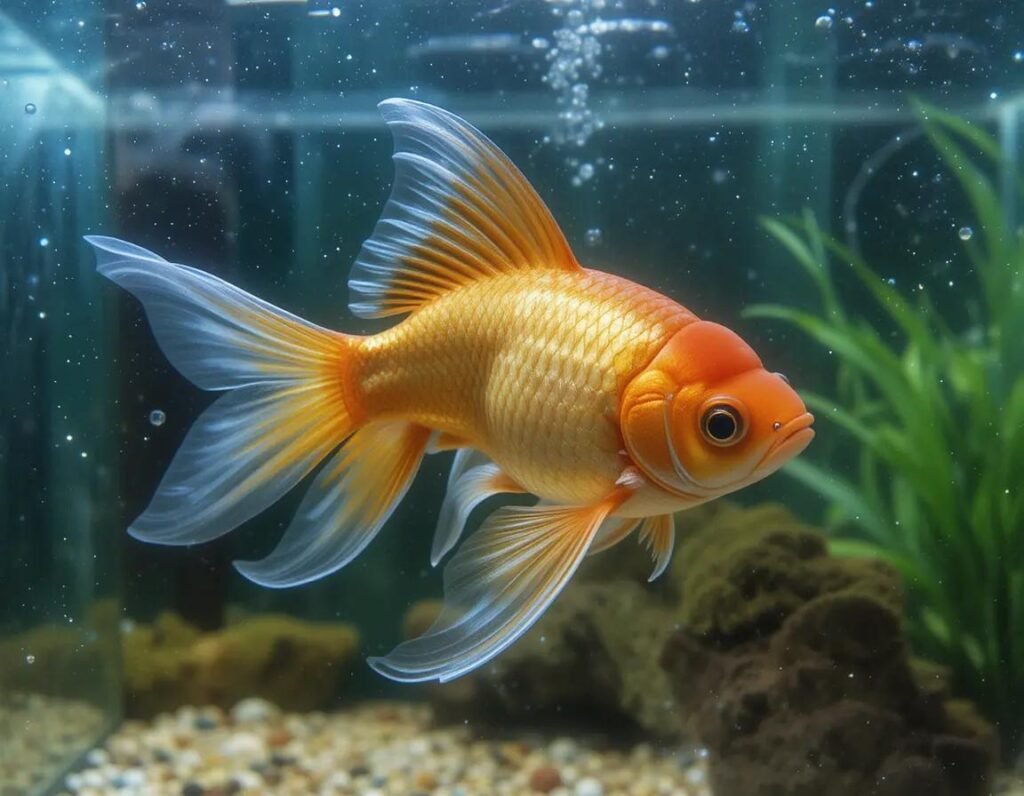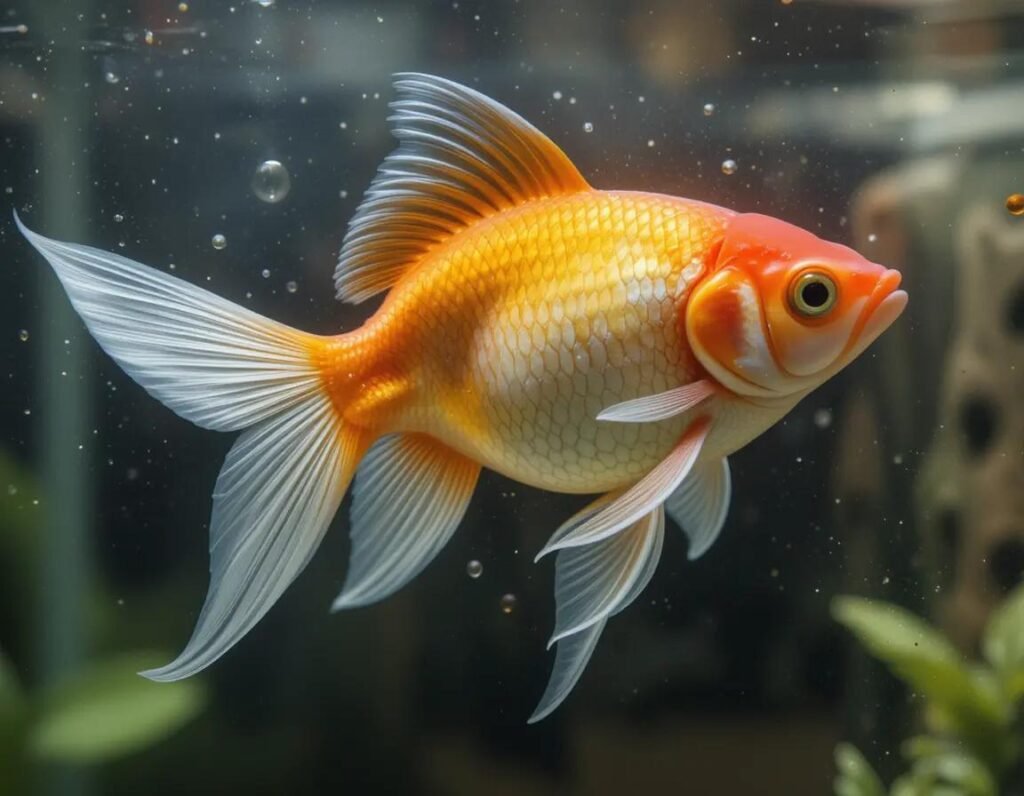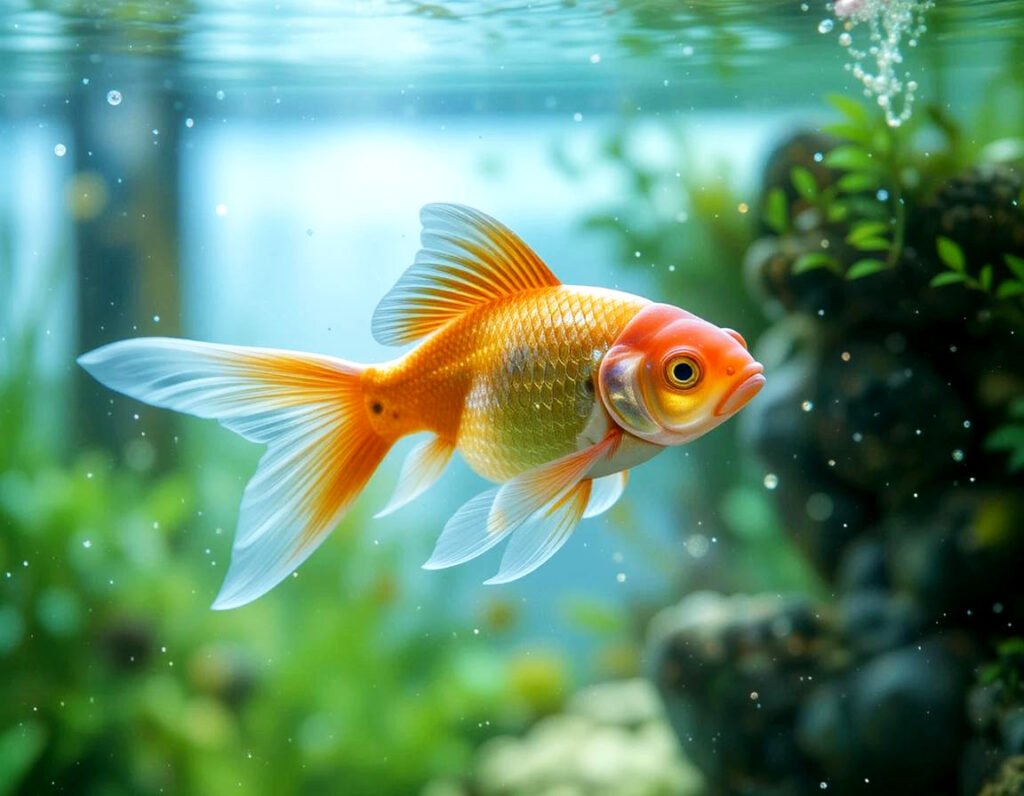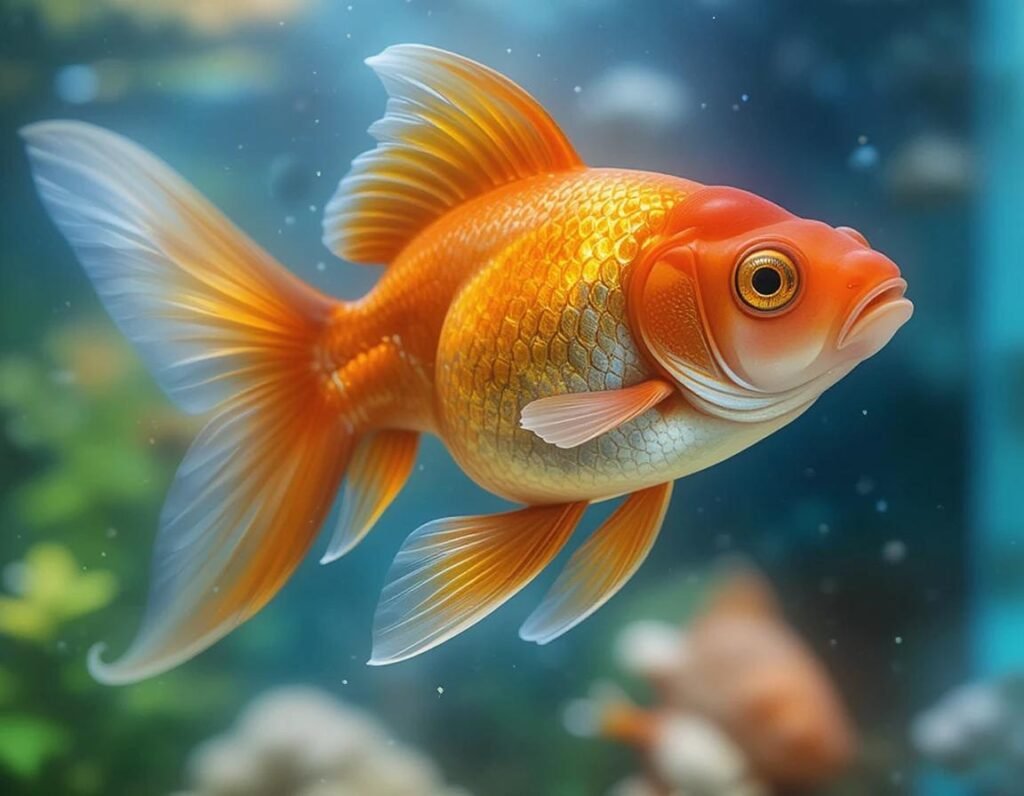
Goldfish are usually known for their graceful swimming and colorful scales, but what happens when your fish starts looking a little… bloated? It’s not the result of overindulging in fish snacks—your goldfish might be suffering from dropsy. No, dropsy isn’t some strange fish trend, it’s a serious condition that every goldfish owner should be aware of.
Let’s dive into the details (pun intended!) and learn about goldfish dropsy symptoms and how to recognize them before it’s too late.
What is Dropsy in Goldfish?
Before we jump into the symptoms, let’s quickly clarify what dropsy is. Dropsy is not a disease itself, but rather a symptom of an underlying problem, usually involving a bacterial infection. It causes a goldfish to become bloated and swollen, and it can be a sign of kidney, liver, or heart problems, or an issue with the digestive system.
In short: dropsy is like the goldfish version of that feeling when you’ve eaten a whole pizza and can barely move. But unlike us, goldfish can’t just take a nap and sleep it off—they need some help!
Goldfish Dropsy Symptoms: How to Spot It
So, how do you know if your goldfish has dropsy? The symptoms are pretty distinct, though not always easy to miss if you’re paying attention.
1. Swollen Belly (Abdominal Distension)
The most obvious sign of dropsy is a bloated belly. This isn’t the cute “chubby cheeks” look; it’s a noticeable swelling. The belly of a goldfish with dropsy will look like it’s been inflated with air, which is a sign of fluid buildup inside its body.
2. Pinecone Effect
No, this isn’t a trendy new fish accessory—it’s a term used to describe how the scales of a goldfish will stick out from its body, making it look like a pinecone. It’s a sign that the internal organs are swollen and pushing against the scales. If you notice this, it’s a pretty good indicator that dropsy is the culprit.
3. Lethargy (Being Lazy)
If your goldfish is floating around the tank like it’s had one too many lazy days, dropsy might be the reason. Affected fish typically become sluggish and may have trouble swimming properly. If your goldfish is lounging on the bottom of the tank or just sitting there, it could be time to check for other symptoms.
4. Loss of Appetite
Much like us when we’re feeling under the weather, goldfish with dropsy may lose their appetite. If your goldfish isn’t nibbling on its favorite food, it could be a sign of a serious health issue. Don’t ignore this symptom—your fish needs nutrition to recover!
5. Labored Breathing
Dropsy can affect the organs responsible for oxygen exchange, causing difficulty in breathing. If your goldfish is gasping for air at the surface or showing rapid gill movement, it could be struggling with this condition.
6. Discoloration or Redness
Sometimes, goldfish with dropsy will show signs of stress or infection, leading to skin discoloration. You might notice redness around the fins, gills, or belly. If you see unusual coloration, it’s time to take a closer look.
7. Fins Clamped Close
Healthy goldfish are usually swimming around, spreading their fins proudly. But if your goldfish has dropsy, you might notice its fins are tightly clamped against its body. This could be a sign of discomfort or stress.
Goldfish Dropsy Symptoms: How to Spot It
Goldfish don’t wake up one day just deciding to get all swollen and pineconey for fun—there are a few common causes behind dropsy.
- Bacterial Infections:
The most common culprit behind dropsy is a bacterial infection, often Aeromonas or Pseudomonas. These nasty bacteria can invade your goldfish’s body and cause internal organ damage, leading to fluid buildup and swelling. - Poor Water Quality:
Goldfish need clean, well-maintained water to stay healthy. If the water is dirty, full of toxins, or improperly filtered, it can stress your goldfish, making it more susceptible to infections like dropsy. It’s like asking your fish to live in a dirty pond—no wonder they’re unhappy! - Organ Failure or Disease:
Dropsy is often a sign that your goldfish’s organs (like the kidneys or liver) are failing. It can also indicate a problem like tumors or internal parasites. Yikes! - Injury or Trauma:
Sometimes, if a goldfish is injured or stressed, it might develop dropsy as a secondary condition. A bad fall off the tank’s rock might leave a goldfish more susceptible to infections.

How to Treat Goldfish Dropsy
If you notice dropsy symptoms in your goldfish, don’t panic. But do act quickly! Here are some steps to take:
- Isolate the Sick Fish
If possible, move the affected goldfish to a quarantine tank to prevent the disease from spreading. This will also help the fish feel less stressed and keep them away from any tankmates that might be at risk. - Improve Water Quality
Check the water parameters—make sure the tank is clean, and the pH, ammonia, nitrites, and nitrates are all in safe levels. A water change might help get the environment back to where it needs to be. - Medicate the Tank
There are specific medications designed to treat bacterial infections and dropsy. Medications containing antibiotics (like Kanamycin or Erythromycin) can help fight off the infection. Follow the instructions carefully—no one wants an overdose in the tank! - Add Aquarium Salt
Adding aquarium salt can help reduce swelling and ease discomfort. But don’t go overboard! Just like with seasoning, a little goes a long way. - Feed a Balanced Diet
Make sure your goldfish is getting a nutritious diet, especially if it’s recovering. Skip the fast food (we’re looking at you, processed flakes) and offer high-quality pellets or frozen foods like brine shrimp or bloodworms.
Final Thoughts: Show Your Goldfish Some Love!
If your goldfish is showing signs of dropsy, don’t ignore the symptoms. With prompt action, clean water, and some extra care, your goldfish can bounce back to its former glory. So, make sure you’re keeping an eye on your goldfish’s health—because when it comes to aquatic pets, prevention is always better than dealing with a “pinecone” situation.
It looks like we’ve covered a lot about goldfish dropsy symptoms and treatments! To summarize everything, goldfish are wonderful pets, but like all pets, they come with their own set of health challenges. Dropsy, although it can be concerning, is treatable with the right knowledge, care, and quick intervention. The key to success is vigilance and acting fast when symptoms appear.
Whether you’re a goldfish newbie or a seasoned tank owner, always make sure to keep the tank clean, monitor your goldfish’s behavior, and make sure it’s living in a stress-free, healthy environment. A happy, healthy goldfish is a delightful companion—one that hopefully doesn’t turn into a pinecone anytime soon!
A Final Word: The Goldfish TLC Plan
To keep your goldfish from getting sick in the first place, here’s a quick, humorous TLC plan that will ensure your fish stays swimming happily:
- Keep the Tank Clean: Your goldfish doesn’t want to live in a smelly, dirty tank any more than you’d want to live in a dusty, dirty room. Regular water changes and a good filtration system are key!
- Feed Wisely: Goldfish love food (who doesn’t?), but overfeeding can lead to health problems. Stick to a balanced diet with high-quality goldfish food. Don’t spoil them too much!
- Watch for Symptoms: If your goldfish is acting off—whether it’s bloated, sluggish, or not eating—take notice. Goldfish are like that friend who tries to tough it out but secretly needs help.
- Visit the Vet (If Necessary): If your goldfish shows symptoms like dropsy, don’t hesitate to consult a vet. Fish are more delicate than we realize, and a vet can offer the right treatment or advice if needed.
- Give Them Space: Just like people, fish need their own space. Make sure your goldfish has plenty of room to swim and explore. It’s not just about size—it’s about peace and quiet. (That means no tankmates that bully!)
By following these tips, you can minimize the risk of dropsy and other health issues while keeping your goldfish happy, healthy, and as beautiful as ever!
FAQs About Goldfish Dropsy Symptoms
To wrap up, here are some common questions people have about goldfish dropsy, just in case you need a little extra help sorting through the information!
1. Can goldfish recover from dropsy?
Answer: Yes! If you catch it early and provide proper treatment (like isolating the fish, improving water quality, and using the right medications), there is hope for recovery. But unfortunately, if the dropsy is too advanced, the goldfish might not make it. So, early detection is key!
2. What is the best way to prevent dropsy in goldfish?
Answer: Preventing dropsy comes down to good goldfish care practices. Keep your tank clean, monitor water parameters, and avoid overfeeding. Also, make sure your fish aren’t stressed or injured. If your goldfish is happy and healthy, it’s less likely to fall victim to dropsy!
3. Is dropsy contagious to other fish?
Answer: While dropsy itself isn’t contagious, the bacterial infections that often cause it can be. So, if one fish has dropsy, it’s a good idea to isolate it from other tankmates to prevent potential spread. Always keep a close eye on your other fish for any unusual symptoms.
4. Can water temperature cause dropsy?
Answer: Yes, extreme temperature fluctuations or water that’s too warm or cold can stress your goldfish, making them more vulnerable to dropsy. Try to keep the water temperature in the ideal range for goldfish (65–75°F or 18–24°C) and avoid rapid changes.
5. Is it safe to use aquarium salt for dropsy?
Answer: Aquarium salt can be helpful in treating dropsy, as it helps reduce swelling and supports the fish’s organs. However, always use it according to the instructions, and be cautious with sensitive fish or plants in your tank. Too much salt can be harmful to both!
6. How long does it take to treat dropsy in goldfish?
Answer: Treatment time can vary depending on the severity of the dropsy and how quickly you start treatment. If it’s caught early, it might take just a few days to see improvements. If the condition is advanced, it could take weeks, or the fish may not recover at all. The key is being patient and consistent with treatment.


